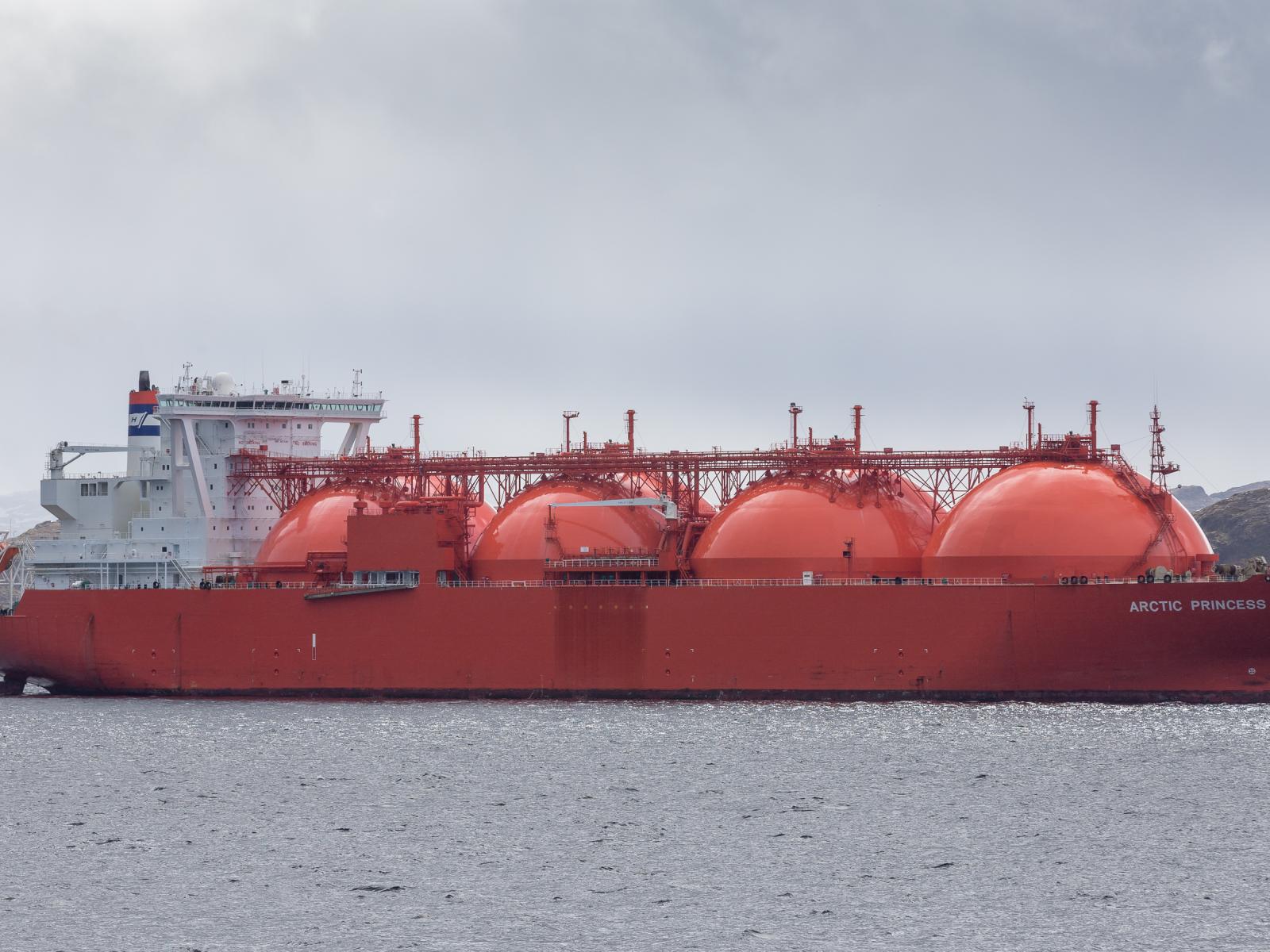Natural Gas Trade in a Global Multi-Sectoral Model
Understanding the evolution of the pipeline and liquefied natural gas trade is critical for analyzing long-term energy system transitions

Ships like this one transport liquefied natural gas (LNG) globally. LNG is providing a growing share of international gas trade because it can be shipped more widely across regions.
(Photo by Joachim Kohler | Wikimedia Commons)
The Science
Understanding the evolution of the international natural gas trade and associated regional teleconnections is critical for analyzing long-term energy system transitions. Natural gas can be traded through liquefied natural gas (LNG)—gas that is first cooled to liquid form, then shipped and converted back into gas at the destination—or through pipelines. However, the future impact of the natural gas trade, in particular LNG, in the context of an evolving global energy system is complex and not well studied. Here, researchers develop a new modeling capability to represent traded LNG and traded pipeline gas as two distinct pathways in a global multi-sector model representing the interactions between multiple energy supply and demand technologies. With this, researchers explore scenarios of future demand, trade, and the corresponding regional investment level in LNG and pipeline trade infrastructure.
The Impact
Researchers have developed the capability to quantify potential investment levels in natural gas trade infrastructure—including LNG and pipelines—across regions as part of the Global Change Analysis Model (GCAM). Using this new capability, researchers showed that LNG makes up a dominant share of natural gas trade globally because it can be shipped more widely across regions. Across scenarios with varying assumptions about economy-wide energy system transitions, trade infrastructure costs, and trade barriers, new LNG export infrastructure ranged from 230 to 840 million tons of gas per annum (MTPA) by 2050. New pipeline export infrastructure ranged from 70 to 620 MTPA by 2050. This new capability opens avenues for further research into the regional economic and environmental implications of natural gas trade expansion or limitation.
Summary
Researchers developed this new natural gas trade infrastructure capability within GCAM—a long-term, detailed, multi-sectoral model that includes representations of energy, agriculture and land use, economy, water, and climate systems and their interactions in 32 geopolitical regions of the world. Specific to the energy system, GCAM includes detailed representations of energy resources, energy transformation technologies—such as electricity and hydrogen—and final energy consumption in the building, transportation, and industrial sectors, each with technological detail and options for fuel substitution. Critical to understanding the multi-sectoral impacts of the natural gas trade, GCAM integrates natural gas production, demand, and trade in the economic context of competing energy sources in the broader energy sector. Each region’s natural gas demand is met by either domestically produced or imported LNG or imported pipeline gas. While LNG is traded in a single global market, pipeline gas is traded in six regional blocs—North America, Latin America, Europe, Russia+, Africa-Middle East, and Asia-Pacific. Our study highlights diverging implications for regions based on their natural gas trade profiles. For example, regions with a significant share of pipeline exports—Russia, for example—experience greater production losses under liquefaction and shipping improvements and geopolitical shifts than regions oriented more toward domestic gas and LNG markets, such as the United States and the Middle East.
PNNL Contact
Marshall Wise, Pacific Northwest National Laboratory, Marshall.Wise@pnnl.gov
Funding
This research was supported by the U.S. Department of Energy, Office of Science, as part of research in the MultiSector Dynamics, Earth and Environmental System Modeling Program.
Published: March 12, 2024
Yarlagadda, B., Iyer, G., Binsted, M., Patel, P., Wise, M., & McLeod, J. (2024). The future evolution of global natural gas trade. iScience, 27 (2), 108902. https://doi.org/10.1016/j.isci.2024.108902